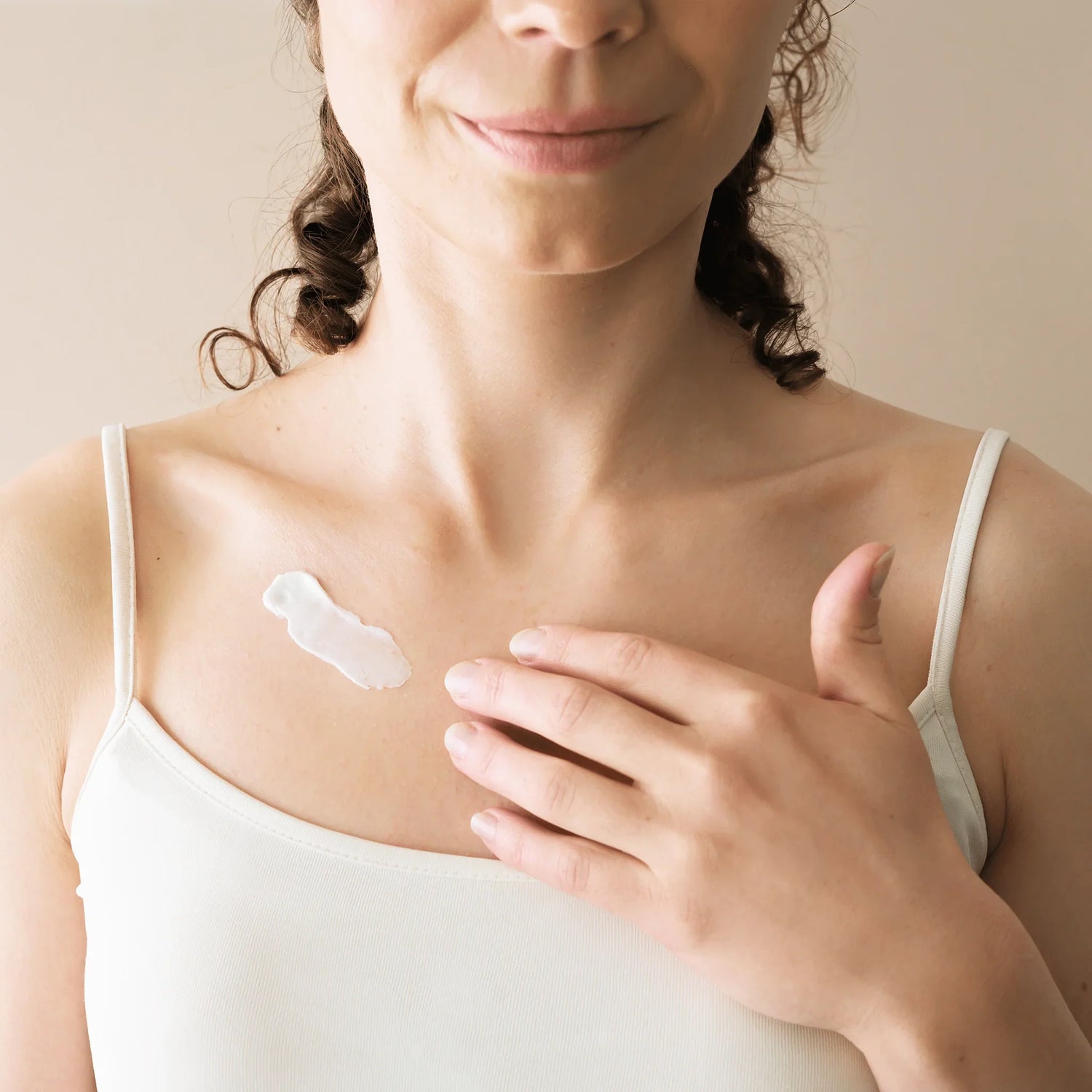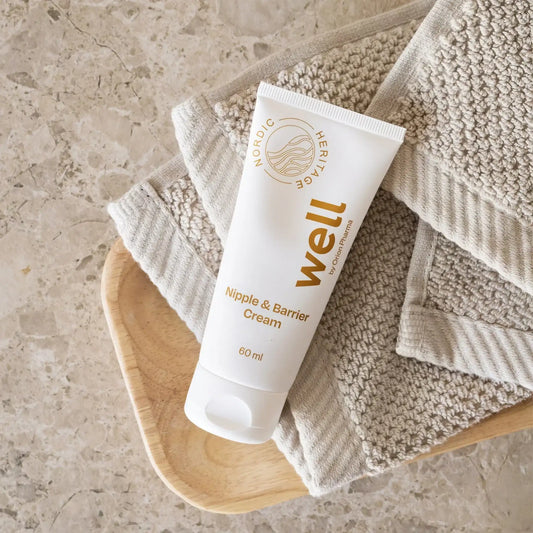
Sore nipples: A guide for breastfeeding mothers
Share
Breastfeeding is a beautiful and bonding experience, but it’s not always easy. Many mothers experience sore nipples, cracked skin, and breastfeeding pain, especially in the early days. These challenges are common—but they’re also manageable with the right support, care, and tools.
In this guide, you’ll learn:
- Why nipples get sore during breastfeeding.
- Signs that something might be wrong.
- How to prevent cracked nipples and discomfort.
- Treatment methods and helpful products.
- Common myths about nipple pain.
- How our Nipple & Barrier Cream can support you through it all.
Why do nipples get sore during breastfeeding?
Sore nipples are often caused by:
- Poor latch: If your baby doesn’t take enough of the breast into their mouth, suction is concentrated on the nipple, causing pain and even bruising.
- Tongue-tie or lip-tie: These anatomical issues can affect how your baby latches.
- Thrush (yeast infection): Burning, itching, or shiny nipples may indicate thrush.
- Engorgement or pumping issues: Overfull breasts or incorrect flange size can lead to nipple trauma.
- Friction or moisture: Tight clothing, wet nursing pads, or improper hygiene can irritate the skin.
Signs something might be wrong
While some tenderness is normal in the first few days, persistent pain is a sign to seek help. Watch for:
- Cracked, bleeding, or blistered nipples.
- Pain that lasts beyond the first minute of feeding.
- Pain between feeds.
- White patches (possible thrush).
- Flattened or misshapen nipples after feeding.
- Baby seems frustrated or feeds ineffectively.
If you notice these signs, reach out to a lactation consultant or healthcare provider.
Prevention tips for sore or cracked nipples
1. Focus on positioning and latch
A deep latch helps distribute suction across the breast, not just the nipple. Try laid-back or football positions and adjust until feeding feels comfortable.
2. Watch for early hunger cues
Feeding before your baby becomes frantic helps avoid aggressive latching.
3. Air-dry and avoid harsh soaps
Let nipples dry naturally after feeds. Avoid alcohol-based wipes or scented soaps.
4. Use breathable nursing pads and bras
Moisture-trapping materials can worsen irritation. Choose soft, breathable fabrics.
5. Start a nipple care routine
Apply a gentle cream after each feed to soothe and protect the skin.
Treatment methods and helpful products
If you’re already dealing with cracked nipples or breastfeeding pain, here’s what can help:
- Apply breast milk, it contains natural healing properties.
- Use a gentle nipple cream. Our Nipple & Barrier Cream is designed to soothe, restore, and protect without needing to be rinsed off.
- Adjust latch and positioning, often the root cause of pain.
- Consult a lactation expert: Personalized guidance can make a big difference.
Why our Nipple & Barrier Cream is a breastfeeding essential
Our cream is more than just a nipple balm: It’s a multitasking skincare solution for both mom and baby.
Use it for:
- Sore or cracked nipples during breastfeeding.
- Preventive care in late pregnancy.
- Dry hands and cuticles.
- Baby’s sensitive skin: cheeks, patches, and barrier protection.
- Elbows, heels, and other dry areas.
Key ingredients:
- Avocado Oil – Nourishes and restores the skin barrier.
- Shea Butter – Moisturizes and calms sensitive skin.
- Glycerin – Draws in hydration and strengthens skin resilience.
- Zinc Stearate – Soothes irritation and reduces friction.
The formula is vegan, fragrance-free, lanolin-free, and AllergyCertified, making it ideal for both mom and baby.
Common myths about breastfeeding and nipple pain
Let’s clear up a few misconceptions:
Myth: Breastfeeding is supposed to hurt
→ Truth: Some tenderness is normal, but ongoing pain is a sign that something is wrong.
Myth: You should wash your nipples before every feed
→ Truth: Your nipples produce natural oils and beneficial bacteria: no need to wash before feeding.
Myth: Cracked nipples mean you’re doing something wrong
→ Truth: They’re common and treatable. With support and care, healing is possible.
Myth: You can’t breastfeed if your nipples are bleeding
→ Truth: You can continue breastfeeding while healing, with guidance from a professional.
A small tube with big impact
Breastfeeding pain, sore nipples, and cracked skin can feel overwhelming, but you’re not alone. With the right care and support, healing is possible, and comfort is within reach.
Our Nipple & Barrier Cream is here to help you through it all.
Because your skin deserves kindness.
Because your journey deserves support.
Because you deserve to feel good in your skin, every step of the way. ❤️

